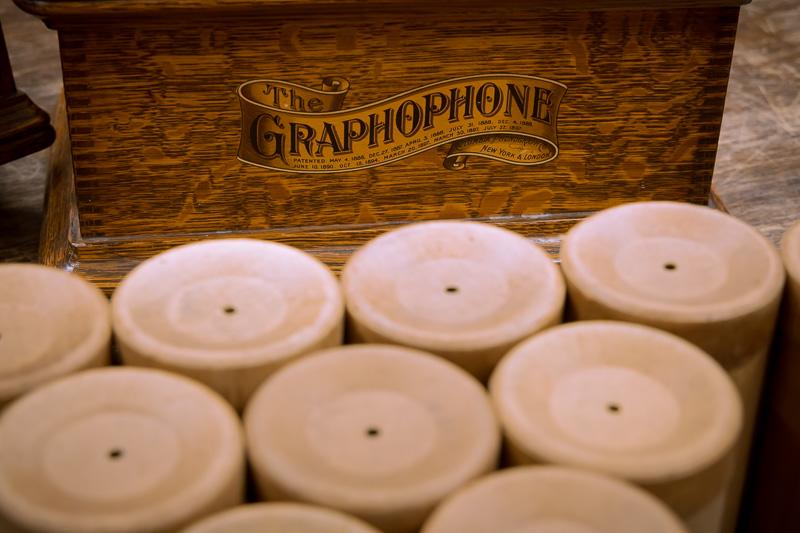Lauri Kettunen (1885–1963)
Lauri Kettunen (1885–1963) Professor of Estonian and related languages
Lauri Kettunen was a recorder of Baltic-Finnic language and culture material, who collected large material collections on the Votic, Vepsian, Estoinan and Livonian languages and published a phonetic history and sample collection on them. Kettunen also created an atlas on the dialects and topolects of Finland, which included samples and explanations.
In his memoirs, Kettunen describes the colourful aspects of his life as a sound recording collector in Votia:
There were a few of us (Ojansuu, Tunkelo, A. O. Väisänen and I) who had ordered ourselves small “Exelsior” phonographs with wax cylinders from Germany. We received our shipments in the Helsinki customs office right before the Great War began. I had already tried it out in my home parish during holiday and was delighted with the results. With the phonograph, I also started recording the disappearing Votian language. However, I would have little time, as in December it was not worth going to a long tour, and after lectures ended in the start of May, I only had about three free weeks before attending summer university in Jyväskylä. […]
Around the Phonograph. 3.2.18. – This time, I would like to talk about the phonograph’s impact on the residents of Kortlahti. The day it arrived here – right after my arrival – would be a special day in the town’s history. It even made Sasku take my work seriously. “Be quiet!” He ordered as the machine started speaking, and everyone obeyed. Everyone had to remain quiet while the phonograph repeated what was said, but eventually we all shook hands, laughed, cheered and tried to explain the phenomenon in vain. At home, a wise cobbler once wished to know what kind of materials were inside the machine that could replicate speech. It was a simple question: “Ken se sigaupäi basib?” (“Who is speaking there?”) As if the device held a creature that would repeat everything that it heard. A great man – a deserter, I heard – who said to have seen the world and its wonders, was soon to find an explanation in his mind. “What would they know”, he told me, his equal in wisdom, “when they have never seen a magnet, such an object that pulls everything toward it while pushing back from its other end. Sasku Habukan poig just scratched his beard and left it at that. With his good linguistic instincts, he figured out the others’ names in Vepsian: the name for the recipient was kyndjäine, i.e. kyntäjäinen (White wagtail), the name for the repeater was basjaine (one who talks), and the wax cylinder was dutk, i.e. dutkaine, which actually referred to a hollow, thin-walled wooden object. Someone guessed that the mysterious machine was invented in Saint Petersburg, but Sasku, who was a Russian patriot, gave a sarcastic comment: Mejaljzed mugomiid strumentoid tegiispad, ka ebad njemtsale perskhe tervehteliiz, “If we could invent such instruments, we would not be kissing (”greeting”) the rears of Germans.” […]
And then I would learn that not everyone was fond of the phonograph. A woman watching from the sidelines observed that such machines and war belong together and were surely signs of the apocalypse. Another looked at me with horror and made the sign of the cross: Antihristus (Antichrist)! I was able to laugh away these allegations, but my mind was somewhat bothered when I pressed on with my velocipede.
Lauri Kettunen: Tieteen matkamiehenä. Kaksitoista ensimmäistä retkeä 1907–1918. Porvoo: Söderström 1945
Iljaa Oga in Votia, 1915
On his trip to Votia in 1915, Lauri Kettunen met Iljaa Oga. In addition to telling stories, Olga sung a few rhythmic songs in the Votic language.
SKS KRA FON Lauri Kettunen 4:1915.
The license for the sound recording is CC BY-NC-ND 4.0 You can share this work with others as long as you cite the author. The work may not be modified in any way, nor may it be used for commercial purposes.
Siitari Karjalainen, 1922
In 1922, Kettunen visited the refugee camp founded in Turkinsari, Vyborg. Refugees fleeing to Finland from regions such as White Karelia were gathered in the camp. White Karelian Siitari Karjalainen sung a rune song in Karelian and in the Kalevala metre:
The fishing of Vellamo’s maiden and the creation of the world (White Karelian dialect of the Karelian language). Recorded in the Vyborg refugee camp in Turkinsaari. SKS KRA FON Kettunen, Lauri 1922:1.
The license for the sound recording is CC BY-NC-ND 4.0 You can share this work with others as long as you cite the author. The work may not be modified in any way, nor may it be used for commercial purposes.

